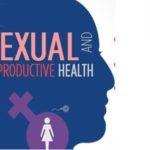Around 44% of the population in the African region suffer from oral diseases, and while the region has experienced the steepest rise globally in oral diseases over the last three decades, spending on treatment costs remains extremely low, a new report by World Health Organization (WHO) finds.
Oral health remains a low priority in many African countries, leading to inadequate financial and technical investment, which in turn undermines prevention and care services as well as oral health promotion. Around 70% of sub-Saharan Africa countries spent less than US$ 1 per person per year on treatment costs for oral health care in 2019, the latest year for which data is available.
Half of the countries in the region do not have oral health policy documents. In addition, the region’s oral health workforce is chronically lacking, with a ratio of just 3.3 dentists per 100 000 people recorded between 2014 and 2019, approximately one-tenth of the global ratio. Such shortcomings have only been further compounded by the impacts of the COVID-19 pandemic.
“Oral health is integral to general health and well-being, yet it has been neglected in the region for much too long, often with severe and lasting consequences,” said Dr Matshidiso Moeti, WHO Regional Director for Africa on World Oral Health Day marked on 20 March.
“While the most prevalent of noncommunicable diseases, oral health diseases are preventable and treatable. It’s crucial for countries to do more to increase access to affordable prevention and care services and ensure that people are equipped with the knowledge and skill on promoting oral health,” Dr Moeti said.
The Africa regional summary of the WHO global oral health status report released today serves as a reference for policymakers and a wide range of stakeholders. In addition, it guides the advocacy process toward better prioritization of oral health in the region to tackle this alarming oral health situation.
The African region has experienced an increase of more than 257 million in oral disease cases over the last 30 years, affecting people from early life to old age. The growing burden of oral diseases such as dental caries, gum diseases and tooth loss disproportionately impacts marginalized groups, reflecting wider inequalities in access to health services. An example is the persisting prevalence of noma, a disease that occurs in contexts of extreme poverty and is primarily found in sub-Saharan Africa. Noma destroys the mouth and face of mostly young children. If left untreated, it is fatal in 90% of cases.
Most oral health diseases can be prevented without medical assistance – through a healthy lifestyle, a well-balanced diet and good oral hygiene. In addition to oral diseases’ significant health burden, they also have a detrimental social and economic impact, restricting individuals’ participation in society and leading to productivity loss, as well as learning disruptions among school children.
In a bid to reinforce oral health promotion, oral disease prevention and control in Africa, WHO Member States adopted a historic resolution in 2021 that set out a bold vision for universal health coverage of oral health services by 2030. WHO has since developed a comprehensive Global Strategy on Oral Health, which was adopted by countries at the 2022 World Health Assembly.
In collaboration with different partners, the Organization has supported countries technically and financially in implementing regional and global oral health strategies, as well as building health worker capacity and strengthening integrated surveillance.
WHO has also supported 11 priority countries in developing, implementing and monitoring an integrated national noma control programme, financially supported by German NGO, Hilfsaktion Noma e.V. Additionally, more than 3600 primary care workers have been registered for a WHO online training course on noma since July 2022.
“I urge countries to prioritize oral health as part of noncommunicable disease and universal health care agendas and increase political and financial commitment. This requires a paradigm shift from treatment-oriented oral health care into more prevention and promotion approaches to address oral health inequality,” said Dr Moeti.







